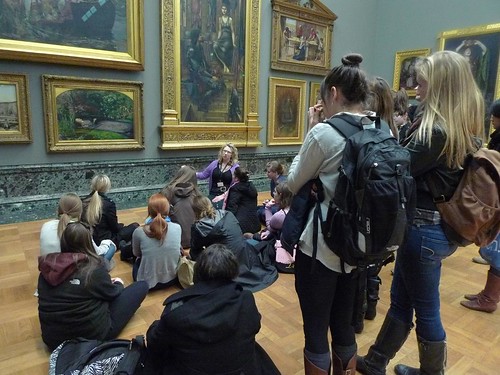I couldn’t believe my eyes when I read this 2009 article in Museum Audience Insight on how technology is actually preferred by older museum visitors to younger ones. Have a look at the chart below:

Courtesy of Museum Audience Insight
According to their findings of visitors to Outdoor History Museums,
,
“… people under thirty were the least likely to want the sites interpreted utilizing technology. People over seventy were the most likely to seek out technology. In fact, people over seventy were 4.5 times more likely to prefer audio tours over young adults under thirty.”
This interesting finding seem to defy logic. Wouldn’t the digital natives belonging to Gen Y or the Millenial Generation be much more attracted to technology than grandpa and grandma?
Perhaps, as suggested by the authors, the younger generation may be so sick and tired of technology that having yet another screen staring at them in a museum is the last thing they want. Also, members of the older generation may find it easier to listen to an audio device than to a sometimes soft spoken museum guide.
Wait, that’s not all.
In a more recent comprehensive survey of interpretation preferences of 40,000 museum visitors across 5 countries, the same guys discovered that…
1) Many visitors prefer a self-curated experience (ie exploring the museum on their own). This is true across art, science, history and children museums.
2) Hands on activities are the most strongly valued experience factors in science and children museums, but not so in art or history museums.
3) Viewing objects are more important in art and history museums and less important in science or children’s museums.
4) Attending programmes and events rank at either number 3 or 4, across all the four museum types.
5) Nobody rated interacting with a computer as a key experience/ interpretive factor in visiting a museum.
(Interestingly, guided tours were also not rated highly in general)
Although the above results may be skewed towards an American visitor base (who may be less gadget geeky as us Asians), I believe that there are grains of truth in its findings. People visit museums because they yearn for an authentic experience in a physical world, exploring objects and artworks that hail from a different place and time. There is a certain mystique and magic in discovering and learning in a real, 3D environment where you can see, hear, touch, smell and perhaps even taste art, science or history.
Against this light, shiny bright technology needn’t necessarily be the “cure all” for a museum’s attendance woes. While they can certainly help to augment a visitor’s museum experience, we shouldn’t be so fixated with incorporating the latest and greatest interactive screens, smart phone apps, or other devices such that we forget the real reason people visit museums.

Museum visitors admiring original artworks at the Tate Britain
